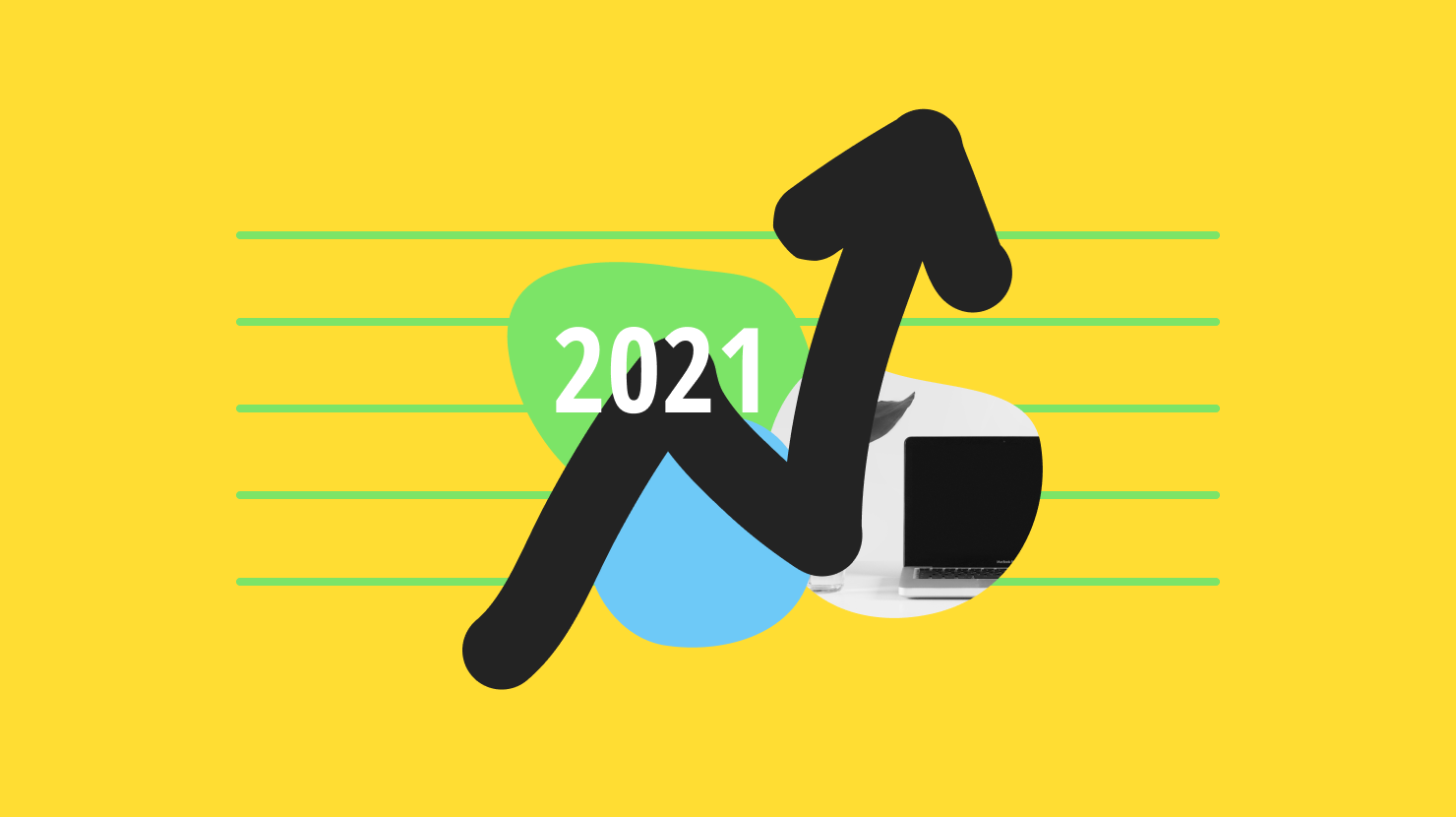
6 min read
With the dramatic shifts we’ve experienced this year, what can we expect for 2021? We explore some of the most anticipated workplace trends in this article.
By Faye Wai
We’re at the last hurrah of the year, and if you’re anything like me, chances are you simply can’t wait till we start anew. The new year symbolizes a new beginning, and I have an inkling that 2021 will be filled with hope and dreams of travel again. But with the dramatic workplace shifts we’ve experienced this year, what can we expect? We explore some of the anticipated trends of 2021 in this article.
For starters, most of us have experienced the blend of work and home life due to Covid-19 triggering the sudden switch to remote work. The pandemic has normalized remote work, and it’s something we’ll continue to see businesses optimize to operate virtually. This will serve as a backdrop and amplify many of the trends and concerns we discuss later.
We’ve already seen this before, but undoubtedly we’ll witness more and more flexible working arrangements, even with the promise of forthcoming vaccines to protect us from the virus. We forecast some organizations being entirely dispersed with the trend of remote-first work, and the shrinking down of physical offices. In a world where you won’t necessarily be seeing your coworkers in the flesh, there are urgent calls for better remote onboarding processes and flexible work schedules. We’ll also need to better champion asynchronous communication and provide more understanding for employees, especially parents in the workplace.

Anxiety has become more prevalent among employees, especially those already experiencing loneliness and disconnection by working from home.. With the rise of telehealth, mental health support will be a focus for most businesses as leaders realize it drastically affects productivity and the bottom line. Companies are already facing increasing pressure to create dedicated resources for shifting employee wellness needs. We predict that businesses (that can afford to do so) will be updating group insurance coverage and other flexible benefits to cover mental health comprehensively. In particular, Employee Assistant Programs (EAPs) will enormously benefit those juggling different priorities in their life and those suffering from long-term illnesses.
With the commuting out of the way and increased flexibility, you’d think that the threats of burnout would decrease. Turns out, it’s not that simple due to anxiety and uncertainty stemming from the pandemic. Continually having to show up virtually not only leads to Zoom fatigue but also stress, burnout, and the constant pressure to be represented by your green dot to showcase you’re “there”. A recent survey has shown that 46% of employees feel the need to be always present, continuing to work even though they feel unwell. The most common reason is to avoid giving off the impression of “slacking” and fears of being laid off under this unstable climate. This counteracts the idea that remote work should be flexible and is an inherent problem of lack of visibility and transparency in a remote setting.

2020 has seen the rise of “Chief Diversity and Inclusion officers”. Since the Black Lives Matter movement, many corporations have been under scrutiny for their inclusion initiatives. Next year, we expect an overall increased investment in diversity efforts as the public and talent market demands transparency and commitment. However, hiring just one person will not solve the tricky problem of diversity, equity, and inclusion. We’re airing on the viewpoint that D&I should be owned by everyone, not just one person or HR.
When the switch to remote work hit, women took the brunt of the negative as daycares and schools shut down—they had to take care of most household chores and childcare. This was a huge barrier to women’s pay equality and advancement in the workforce in 2020, as a study found that women are more likely than men to prioritize parenthood over their careers. We’re now exploring how remote work can be used to keep a level playing field where mothers can flexibly balance their obligations and partners can better share the domestic workload.
The record-level layoffs and redundancies of this year means we’re still playing catch up with a recovering economy and waiting for further repercussions to hit us. Safety and security are by far top of mind for the job seekers of 2020.
On the recruitment side, there’s a lot to adapt to as we overcome the challenges and nuances of a different way to hire and conduct interviews. Companies are considering remote workers from all over the world, and with that comes a new learning curve and a slew of operational considerations.
As the talent war slowly resumes, location is no longer a boundary. This means there’s a massive opportunity for improved video interviewing applications, and performant Applicant Tracking Systems (ATS) geared towards virtual recruiting.
.png?width=481&name=Navigating_hybrid_workplaces_(remote_+_in_office).png)
The current arrangement of remote work poses a dilemma: there are both pros and cons to working at home and working at the office. The complex problem of workspaces remains unsolved for most as we’re suffering from a lack of social interactions and connection that only occurs when we meet and collaborate physically. We’ll likely see companies adopt a hybrid workplace model to accommodate work-life integration to encourage focus and designate certain in-person days to facilitate in-person meetings or discussion-heavy schedules.
As I mentioned above, the state of remote work has impeded communication, feelings of belonging, and connection to our organizations. Organizations will need to find ways to amplify the employee voice and maintain an overall sense of connection to the company.

In 2021, we’ll see businesses prioritizing faster adoption of new technologies due to shifting circumstances. In particular, B2B companies will do their best to make it easier for their customers to implement their products faster and offer more tailored solutions and technical support.
In this virtual world, the digital divide has widened—people who are not tech-savvy are increasingly left behind. There’s a massive need to invest in better access to re-skilling, education, and training in a virtual-first world.
What 2020 revealed to us was that most organizations weren’t ready for employees to take home their technology and work wherever they want or need to. The mastery of technology, such as data management, tightened cybersecurity, and disaster recovery will prove to be one of the most in-demand skills in 2021. Organizations will also invest in smoother virtual offboarding processes too.
The fact is, 2020 is the year of figuring it out as we go. The top workplace concerns of next year likely revolve around connection, communication technology, transparency, and of course, assimilating further into the nuts and bolts of remote working. It’ll be a fun and exciting adventure, for sure!
Do you agree with the predicted trends above or have any to share? Let us know in the comments!
Read more by
Faye Wai
Jostle’s employee success platform is where everyone connects, communicates, and celebrates at work. Find out more at jostle.me. © 2009–2024 Jostle Corporation. All rights reserved.